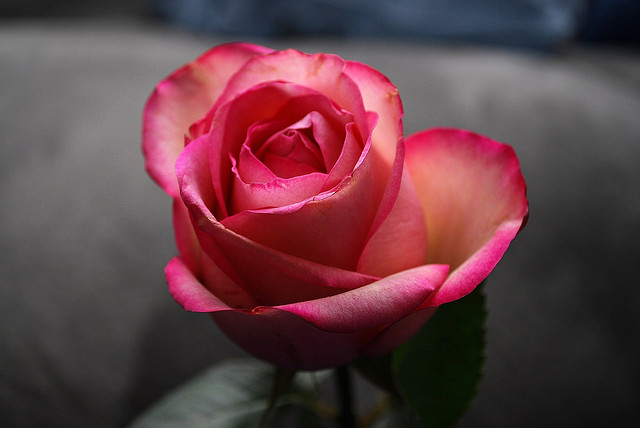
On the eve of National Poetry Month, March 31, I led a workshop on How to Read a Poem at Highland Community College in Freeport, IL.
For an hour, several dozen students and guests from the community came to engage in “holding [a poem] to the light like a color slide.”
First we held actual photographic slides from the 1970s (younger attendees had never seen them) up to the library’s florescent ceiling lamps. Then we took a stanza of a poem into our hands and gazed at it in the same way, turning it slowly and carefully, so that our senses, memories, and emotions illuminated the colors. The real details in the lines combined with our personal lenses created several dozen visions of the poem.
After the presentation, a woman from the audience came to speak with me. “I never knew,” she said, “that this could be done. My whole life, I thought there was just one right answer to a poem, and I was never smart enough to find it.”
She was around seventy years old.
Watching a woman become liberated after so many years of poetry intimidation was powerful and inspiring. It was also sobering to see how early classroom experiences can affect our attitudes for decades–until those attitudes are given a chance to change. Perhaps you had a teacher, most likely well meaning, who presented poems as puzzles or equations to be solved rather than invitations to open. Perhaps you or your children have had to take standardized tests that reduce poems to multiple choice answers. But it’s not too late.
No matter how you’ve experienced poetry in the past, you can face a new poem as the brave new world it is. Beauty instead of boredom, emotions instead of elusiveness, and grace instead of grades. You can read and wonder without the pressure to get it “right,” even just enjoy the sounds of words and rhythms of lines. But it takes work to stop working sometimes. The effort is to arrive with no other agenda than enjoyment.
Lately, I’ve been enjoying some of the exuberant work of Pattian Rogers in her book Firekeeper: Selected Poems. Open this gorgeous invitation, “Place and Proximity.” Open it again and again. Don’t worry about “meaning” as you read it, but eat, breathe, and survive on its “stars,” which are, of course, its gleaming, sizzling words.
Place and Proximity
I’m surrounded by stars. They cover me
completely like an invisible silk veil
full of sequins. They touch me, one by one,
everywhere—hands, shoulders, lips,
ankle hollows, thigh reclusions.
Particular in their presence, like rain,
they come also in streams, in storms.
Careening, they define more precisely
than wind. They enter, cheekbone,
breastbone, spine, skull, moving out
and in and out, through like threads,
like weightless grains of beads
in their orbits and rotations,
their ritual passages.
They are the luminescence of blood
and circuit the body. They are showers
of fire filling the dark, myriad spaces
of porous bone. What can be nearer
to flesh than light?
And I swallow stars. I eat stars.
I breathe stars. I survive on stars.
They sound precisely, humming in my nose,
in my throat, on my tongue. Stars, stars.
They are above me suspended, drifting,
caught in the loom of the elm, similarly enmeshed
in my hair. They are below me straight down
in the deep. I am immersed in stars. I swim
through stars, their swells and currents.
I walk on stars. They are less,
they are more, even than water
even than earth.
They come with immediacy. They are as bound
to me as history. No knife, no death
can part us.
Photo by PS Lee, Creative Commons, via Flickr. Post by Tania Runyan.



